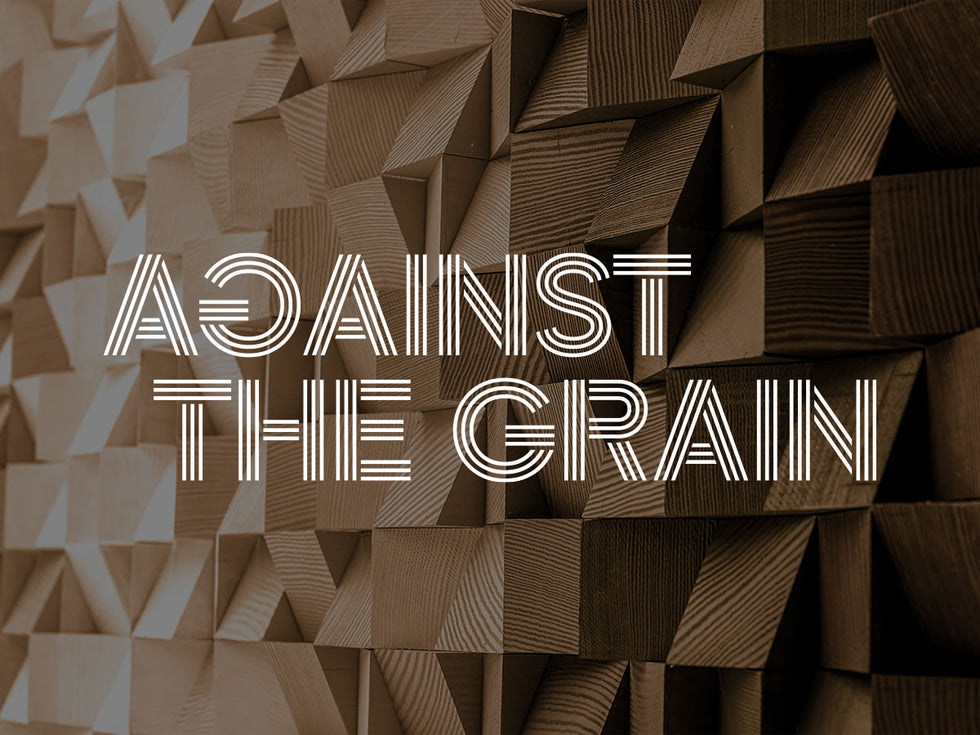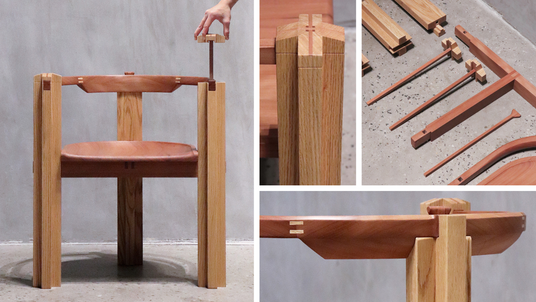
WINNER - AMATEUR
XIN ZE SEAH
Crafted from Glacial Oak and Brushbox, the Pin Chair explores the traditional pinned mortise and tenon joint. Held together by three large pins running the length of each leg, it can be assembled and disassembled entirely without hardware.
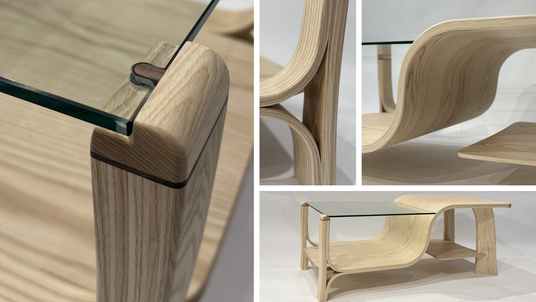
RUNNER-UP - AMATEUR
MARK RAVISHAN
This coffee table embodies a dialogue between fluidity and structure, as a sculpted timber form transitions into a tempered glass surface. Inspired by wood grain and the contrast between transparency and solidity, it balances sculptural expression with everyday function. An interchangeable lower shelf – in timber or glass – adds versatility and aesthetic flexibility.
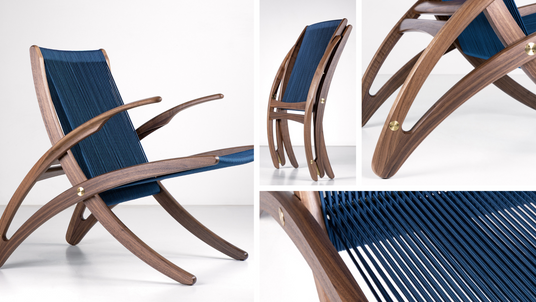
WINNER - PROFESSIONAL
RHYS JONES
Gesto Armchair explores the economics of space utilisation through its capacity to fold and be moved with ease. It follows the architectural idea that the rituals of living can overlap and shift to suit our needs. The economy of this approach showcases craft as a discipline of restraint – working with only what is needed and shaping with clarity to strengthen our bonds with the spaces and environments we inhabit.
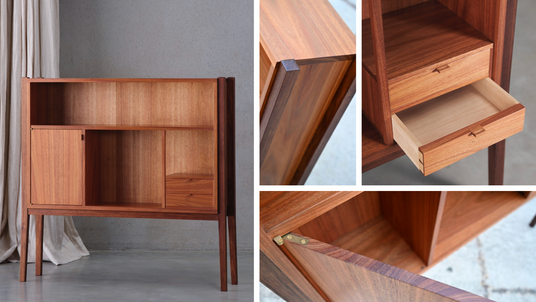
RUNNER-UP - PROFESSIONAL
ROBERT MERK
A cabinet for drinks or display. Solid Blackwood with shop sawn Blackwood veneer back panel and Port Orford Cedar drawers. The legs and frame under the cabinet are also Blackwood but from a different tree, giving a slight contrast.
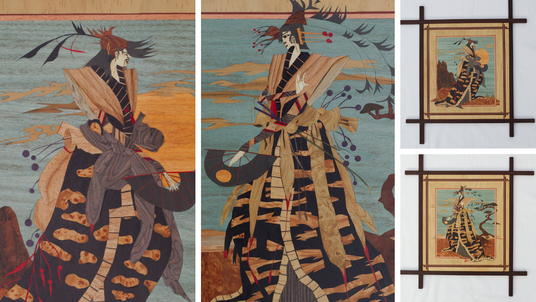
WINNER - AMATEUR
LES WHIDDETT
A pair of Samurai warriors in full ceremonial dress, presented within a Japanese-style Jarrah frame with a cherry veneer back. Crafted using traditional knife-cut marquetry techniques, the piece incorporates coloured and natural veneers, assembled with hide glue, and finished by hand with shellac and wax.

RUNNER-UP - AMATEUR
ROBERT PARSLOW
Multiple tools and techniques were employed to create the maple leaves: a Wecher was first used to remove the bulk of the material, followed by a power rotary tool for detailed shaping, and an improvised 5mm sander for the final refinement. Pyrography was applied to both the background and the veins on the leaves, adding subtle texture and detail.
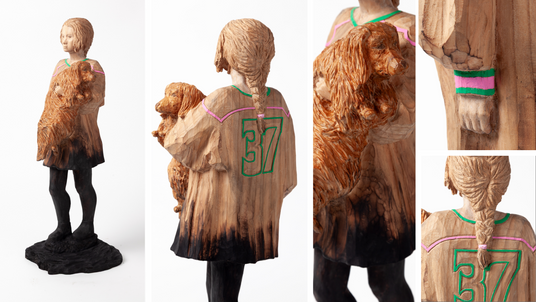
WINNER - PROFESSIONAL
WANDA GILLESPIE
Carved in Himalayan Cedar with charring, black stain, paint, coloured pencil, ink pen, and sealer. The loose carving of the clothing contrasts with sharper lines to create emotional depth. Continuing a theme of environmental disasters, this piece reflects on bushfires and was inspired by burnt forests and the green shoots of regeneration in New South Wales – a familiar sight in the Australian landscape.
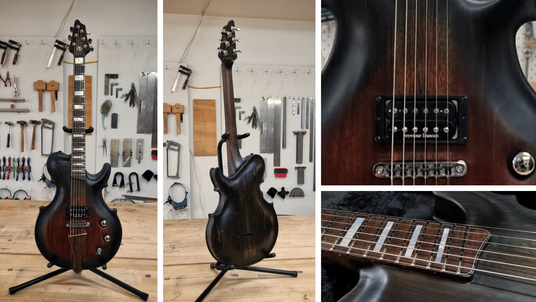
RUNNER-UP - PROFESSIONAL
BRAD BUTLER
Crafted over two years from reclaimed Australian hardwoods, this guitar blends classical inspiration with modern function. It features a carved Blackwood and Silky Oak body, Gidgee details, and an active Piezo bridge for both electric and acoustic tones.
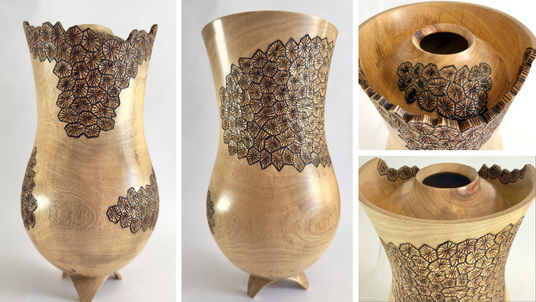
WINNER - AMATEUR
JOHN MACFADYEN
Turned from Victorian Camphor Laurel, this hollow vessel explores the challenge of deep hollowing with clean internal surfaces and even walls. Lacking natural grain interest, the piece was textured using a micromotor, burrs, and pyrography. A deliberate cut reveals the interior, suggesting decay slowly consuming the form.
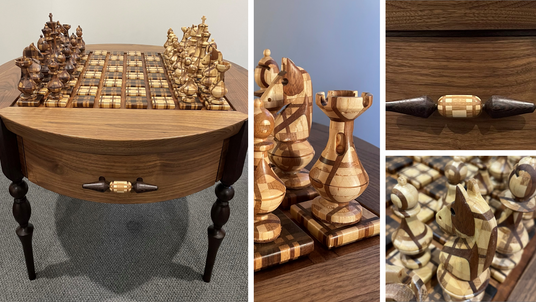
RUNNER UP - PROFESSIONAL
SHARLON FARRUGIA
Plaid Gambit is a finely crafted chess table that reimagines traditional plaid as a bold three-dimensional form. Made from a mix of hardwoods, it blends rich tones with precise construction, balancing heritage and innovation.
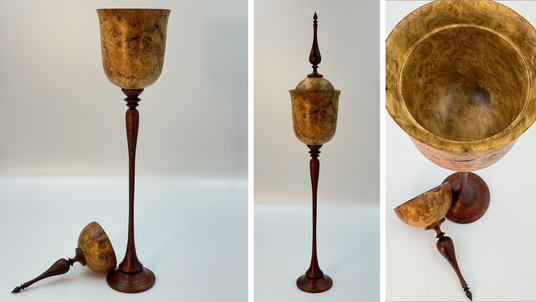
WINNER - PROFESSIONAL
IAN MOSS
This piece is crafted with a focus on elegant proportions and precise assembly. The lid is shaped to sit seamlessly within the body, creating a balanced form. The long stem is turned from straight, close-grained timber, while the finial completes the composition with refined detail. Final assembly requires careful alignment to maintain concentricity between the components.

RUNNER UP - PROFESSIONAL
SIMON BEGG
This cockatoo was created using the German ring-turning technique, where a donut-shaped form is turned and then cut to reveal a silhouette. The added complexity of segmented rings requires precise alignment and tight tolerances. Crafted from Rock Maple, Black Walnut, Huon Pine, and Ebony.

